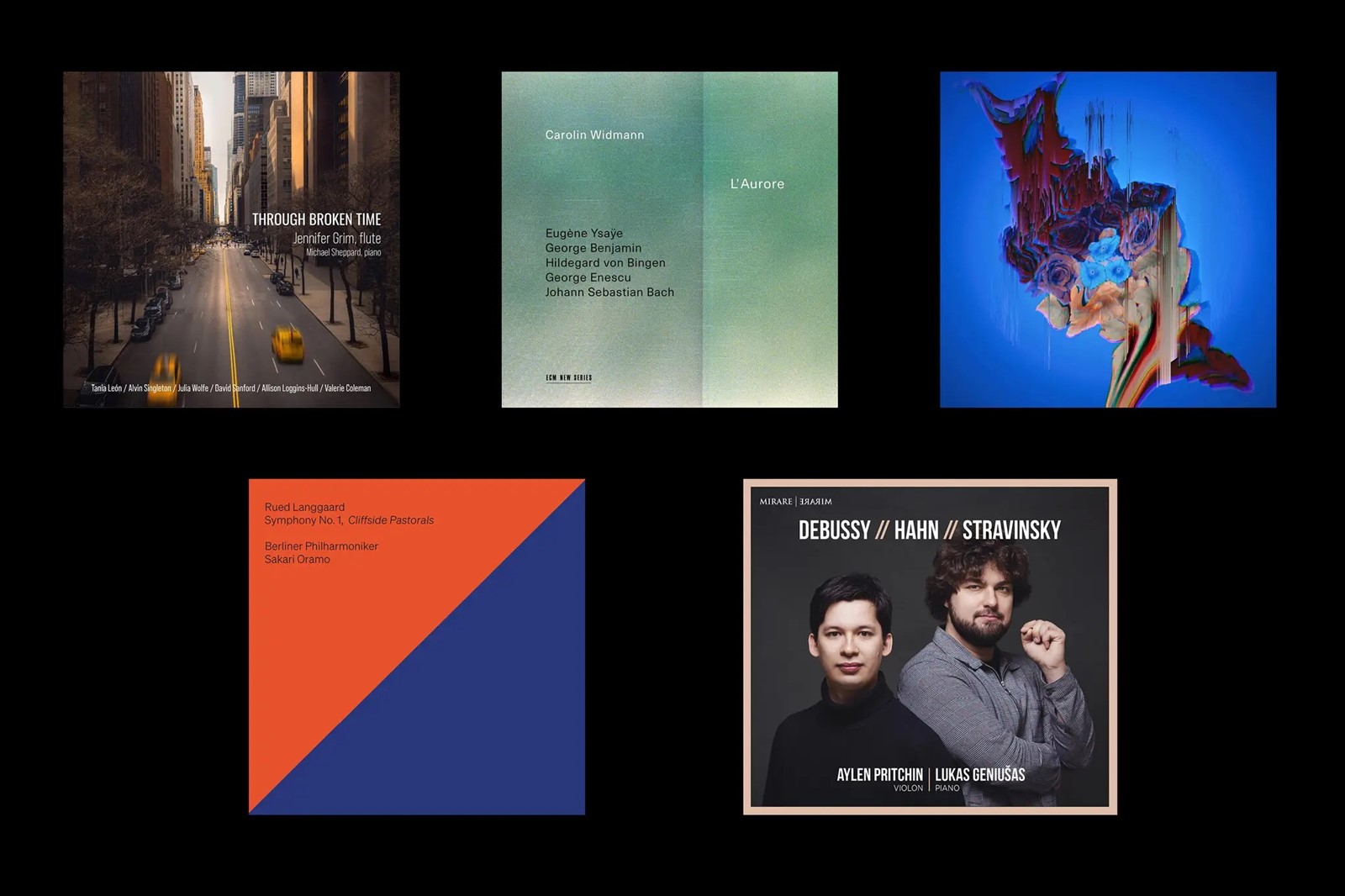
Langgaard: Symphony No. 1
Berlin Philharmonic Orchestra; Sakari Oramo, conductor (Dacapo)
Maybe, like me, you actually enjoy Strauss’ “Alpine” Symphony? Maybe you think it could be longer, louder, downright dafter? Let me introduce you to Rued Langgaard’s Symphony No. 1, “Cliffside Pastorals,” a mountaineering achievement so brave it makes Strauss’ little escapade sound like a walk in the park.
Langgaard was one of the odder 20th-century composers, and there are traces of his later path in this piece, which he finished at age 17 and persuaded the Berlin Philharmonic to premiere in 1913, two years before the Strauss. Demanding a colossal orchestra, its five movements map a spiritually symbolic climb from a seashore to a towering, craggy peak; its finale, complete with a gloriously Brucknerian ending, is titled “Courage.” I have adored it, to a most likely unhealthy degree, ever since I heard Leif Segerstam’s 1990s account with the Danish National Radio Symphony; with that eccentric conductor reveling in all of its overblown drama, it lasts fully 68 minutes.
Sakari Oramo’s excellent version, a successor to his equally wonderful Langgaard recording with the Vienna Philharmonic, was made live in Berlin this year, and it clocks in at almost 15 minutes shorter. — David Allen
Debussy, Hahn, Stravinsky: Works for Violin and Piano
Aylen Pritchin, violin; Lukas Geniusas, piano (Mirare)
This urbane album doesn’t pair Reynaldo Hahn’s seldom performed violin sonata with its clearest precursors — the much better known sonatas of Fauré, whom Hahn revered. Instead, violinist Aylen Pritchin and pianist Lukas Geniusas place the relaxed, stylish Hahn piece, written in 1926, between Debussy’s 1917 sonata and Stravinsky’s 1932 “Duo Concertant.” The message: Hahn is a composer of modernity, not solely of the Belle Époque, with which he is usually associated. This is, after all, an artist who subtitled his sonata’s fast middle movement “12 CV; 8 cyl; 5,000 revs,” after a motorcar’s capabilities.
That second movement romp, Véloce, is spry and a little spiky; the delicate first movement is airy enough to keep from sentimentality, without turning chilly; the third has the tender elegance, the dry-eyed nostalgia, that is Hahn’s specialty, with a flash of climactic, husky intensity. Pritchin’s fragile, sometimes wispy tone is a nice partner for Geniusas’ gentle-grained sound, here and in the other pieces. — Zachary Woolfe
“Through Broken Time”
Jennifer Grim, flute; Michael Sheppard, piano (New Focus)
In this program — of works by Tania León, Alvin Singleton, Julia Wolfe, David Sanford, Allison Loggins-Hull and Valerie Coleman — none of the music is on autopilot.
Singleton, born in 1940, is the oldest composer represented; his music should be heard in concert halls more frequently. Jennifer Grim’s take on “Argoru III,” for solo flute, digs in to his melodic gifts, as well as his feel for textural variation within five concise minutes. Similarly wide-ranging is León’s “Alma” — the lyrical opening of which follows a winding, entertaining path toward the bumptious rhythmic fillips of its central section. And in Coleman’s “Wish Sonatine,” a work inspired by a Fred D’Aguiar poem about the Middle Passage, the composer navigates between episodes of horror and moments of communal purpose with narrative drive.
Sanford — a protean talent — gets two pieces on the program. “Klatka Still,” for flute and piano, has been recorded before. On this release, Michael Sheppard excels in the keyboard’s avant-jazz-influenced clusters in the second movement; Grim’s flute playing steers some of that energy into starkly pressurized notes that also have the quality of swing. — Seth Colter Walls
“L’Aurore”
Carolin Widmann, violin (ECM)
The best way to hear “L’Aurore,” Carolin Widmann’s absorbing solo violin program, is as a series of deftly crafted relationships among its repertoire choices. Between the two versions of “Spiritus sanctus vivificans vita,” an antiphon by Hildegard von Bingen, for example, or between that antiphon’s simplicity and the angular density of George Enescu’s “Fantaisie concertante.” Enescu’s florid musical language also makes for an effective complement to the compact expressiveness of George Benjamin’s Three Miniatures for Solo Violin; and the final note of the third miniature, G, leads so naturally to the opening of Eugène Ysaÿe’s Sonata No. 5 in G that you can almost imagine its being these composers’ intention all along.
But at a macro level, this entire sequence feels like an upbeat to Bach’s Partita No. 2 in D minor, which here sounds spacious and dreamlike, as if the music were being recollected as a distant memory. — David Weininger
“isomonstrosity”
isomonstrosity; Ellen Reid, Yuga Cohler, Johan Lenox, principal producers; International Contemporary Ensemble (Brassland)
This stirring EP was a surprise to me, even though the music was written by artists I’m mostly aware of: Pulitzer Prize winner Ellen Reid, Bryce Dessner, Marcos Balter, Wang Lu, Carlos Simon, Nina C. Young, Johan Lenox. Yet it’s the particular way in which the isomonstrosity collective has organized these contributions that is part of the project’s charm. You can’t flip through it, track by track, to assign credit (or blame) to one composer or another, like a regular classical music compendium.
The process began like many other pandemic projects. Contributions were solicited and collected, all online, including the performances by members of the International Contemporary Ensemble. Next, guest vocalists including Danny Brown and Vic Mensa were invited to respond to the material. But that’s where the additive process of typical long-distance collaborations came to a halt. Instead of just pairing vocalists with backing tracks, the three principal producers “chopped up and restructured” the material, collage style.
Bring on the sequel. — Seth Colter Walls


 PREVIOUS ARTICLE
PREVIOUS ARTICLE
